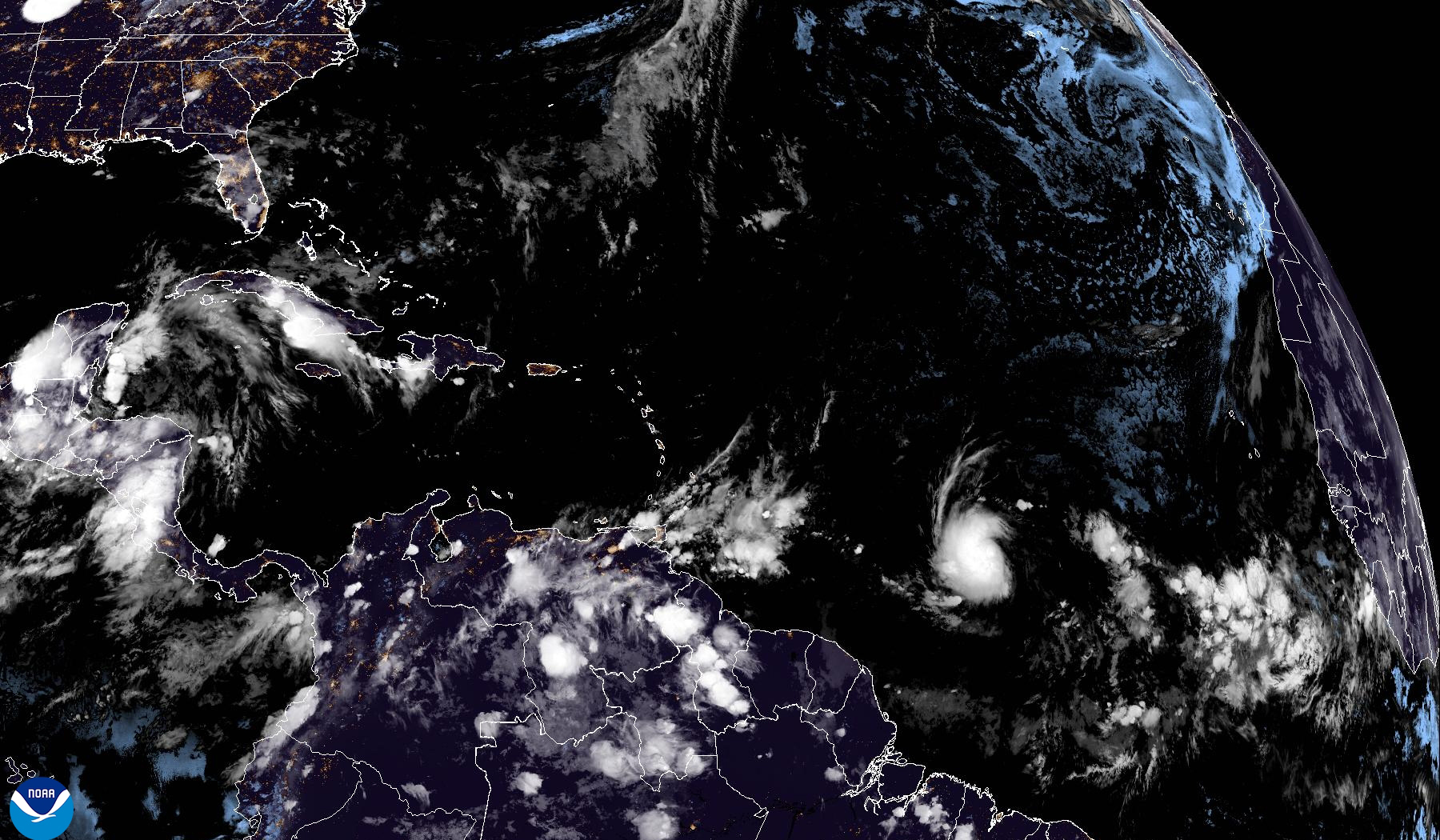Hurricane Beryl’s Track and Intensity: National Hurricane Center Beryl

National hurricane center beryl – Hurricane Beryl emerged as a tropical storm on July 5th, 2023, in the Atlantic Ocean. It gradually intensified, reaching hurricane status on July 7th. Beryl’s track took it across the open ocean, paralleling the eastern coast of the United States.
The National Hurricane Center is monitoring Tropical Storm Beryl, which is expected to become a hurricane later today. For the latest forecast on Hurricane Beryl, including its predicted path and intensity, visit the hurricane beryl forecast. The National Hurricane Center will continue to provide updates on Hurricane Beryl as it develops.
The hurricane’s intensity fluctuated as it moved over different ocean temperatures. Warmer waters fueled its development, while cooler waters weakened it. Beryl’s track also influenced its intensity, as it encountered wind shear that disrupted its structure.
Di National Hurricane Center don talk say Hurricane Beryl dey form for di Atlantic. Di storm get potential to turn into a hurricane. You fit check di hurricane beryl spaghetti models to see how di storm fit move. Di National Hurricane Center go continue to monitor di storm and give updates as e dey develop.
Historical Context
Similar hurricanes have impacted the same region in the past. In 2017, Hurricane Franklin followed a similar path, causing significant damage to the Caribbean islands. Another notable hurricane, Matthew, struck the southeastern United States in 2016, leaving behind widespread destruction.
By analyzing historical data, meteorologists can gain insights into the potential impacts of future hurricanes and develop strategies for mitigation and response.
Impact of Hurricane Beryl

Hurricane Beryl brought significant impacts to coastal communities and inland areas, causing damage to infrastructure, property, and the environment. The economic losses and recovery efforts are still being assessed.
Impact on Coastal Communities
The hurricane’s powerful winds and storm surge battered coastal communities, causing widespread damage to homes, businesses, and infrastructure. Many buildings were destroyed or severely damaged, leaving residents without shelter. The storm surge also flooded coastal areas, causing further damage to property and infrastructure.
Impact on Inland Areas
Inland areas were also affected by Hurricane Beryl, although the damage was generally less severe than in coastal communities. The hurricane’s heavy rains caused flooding in many areas, leading to road closures and damage to bridges and other infrastructure. The winds also caused damage to trees and power lines, leaving many residents without electricity.
Environmental Impact
Hurricane Beryl also had a significant impact on the environment. The storm’s winds and waves eroded beaches and dunes, and the heavy rains caused flooding in coastal wetlands. The storm also caused damage to coral reefs and other marine ecosystems.
Economic Losses and Recovery Efforts, National hurricane center beryl
The economic losses caused by Hurricane Beryl are still being assessed, but they are expected to be significant. The damage to infrastructure, property, and the environment will require a major recovery effort. The government and private organizations are working together to provide assistance to those affected by the storm.
Forecasting and Preparedness

The National Hurricane Center (NHC) employs sophisticated computer models and observational data to forecast Hurricane Beryl’s track and intensity. These models simulate the storm’s movement and evolution by considering factors like atmospheric pressure, wind patterns, and ocean temperatures. By analyzing multiple model runs and incorporating expert knowledge, the NHC issues forecasts that provide critical information for decision-making.
Accuracy of Forecasts
While hurricane forecasts have improved significantly over the past decades, there is still room for improvement. Errors in track and intensity predictions can arise from various factors, including the chaotic nature of weather systems, limited observational data in certain regions, and the inherent uncertainties associated with computer models. The NHC continuously evaluates and refines its forecasting techniques to enhance accuracy and provide timely and reliable information.
Preparedness Measures
In response to Hurricane Beryl, local authorities and residents implemented a range of preparedness measures. Evacuations were ordered in coastal areas at risk of storm surge and flooding. Shelters were established to provide safe refuge for those displaced by the storm. Emergency response teams were placed on standby to respond to any potential damage or emergencies. Additionally, residents secured their homes and stocked up on essential supplies like food, water, and batteries. These proactive measures helped mitigate the impact of Hurricane Beryl and ensure the safety of communities in its path.